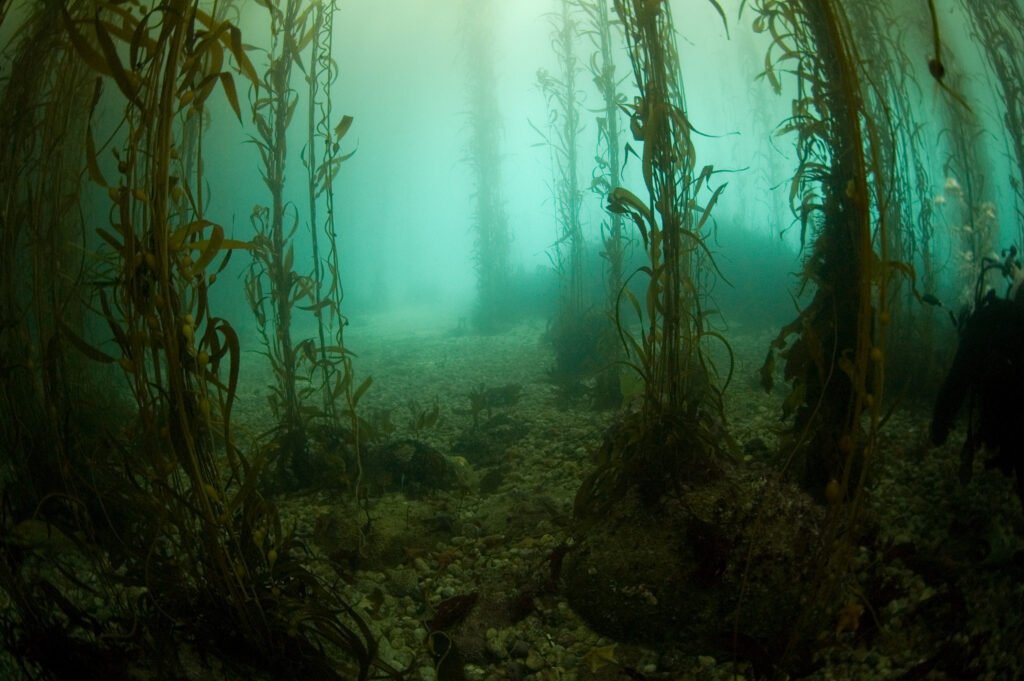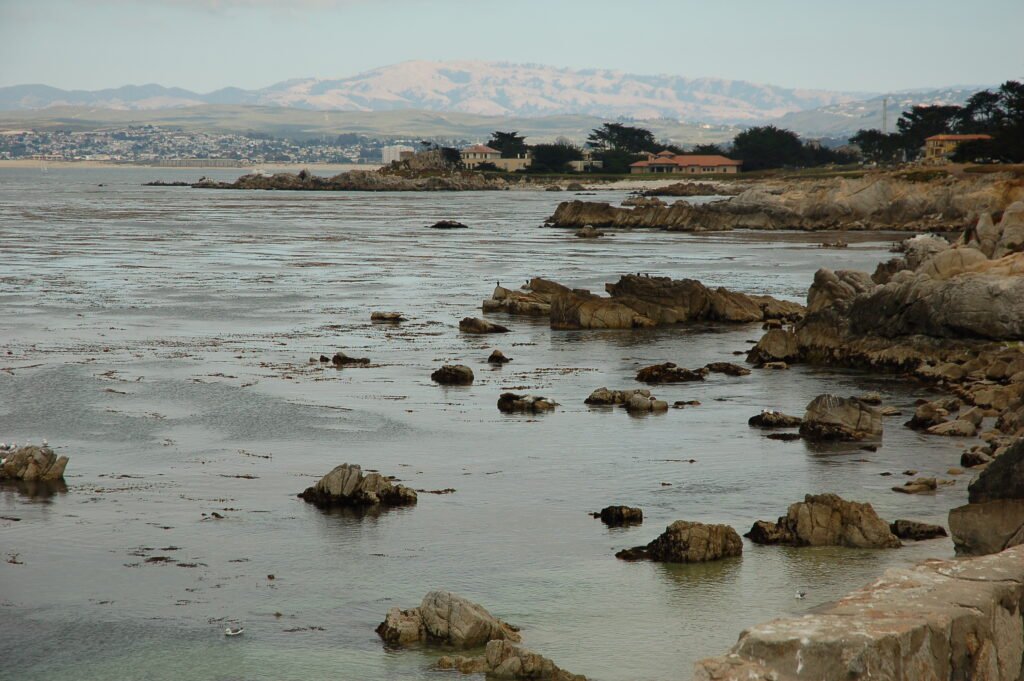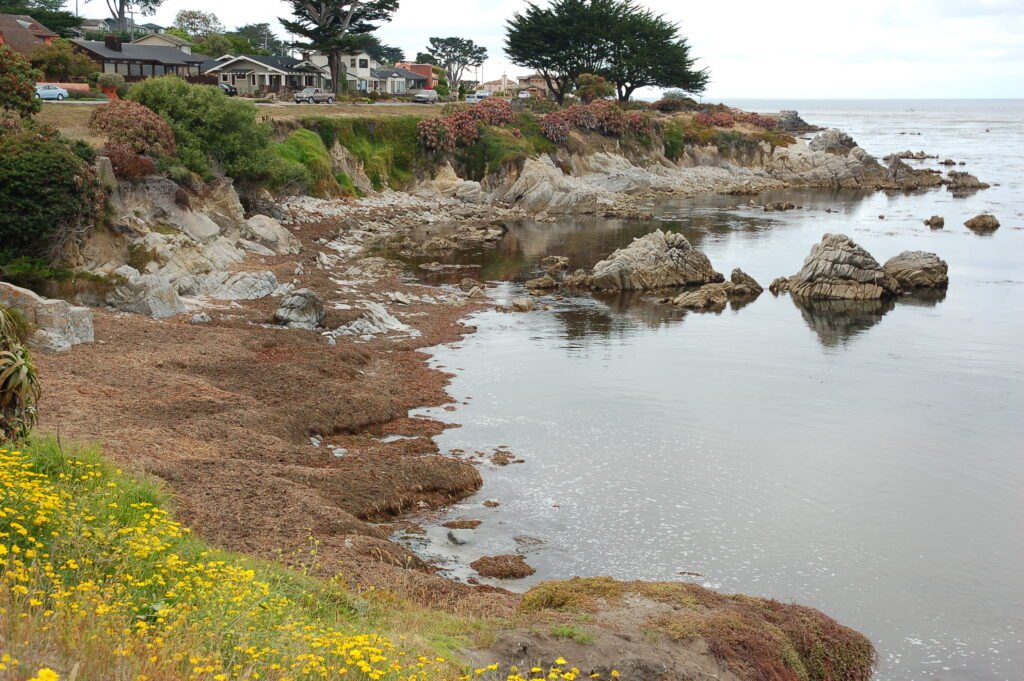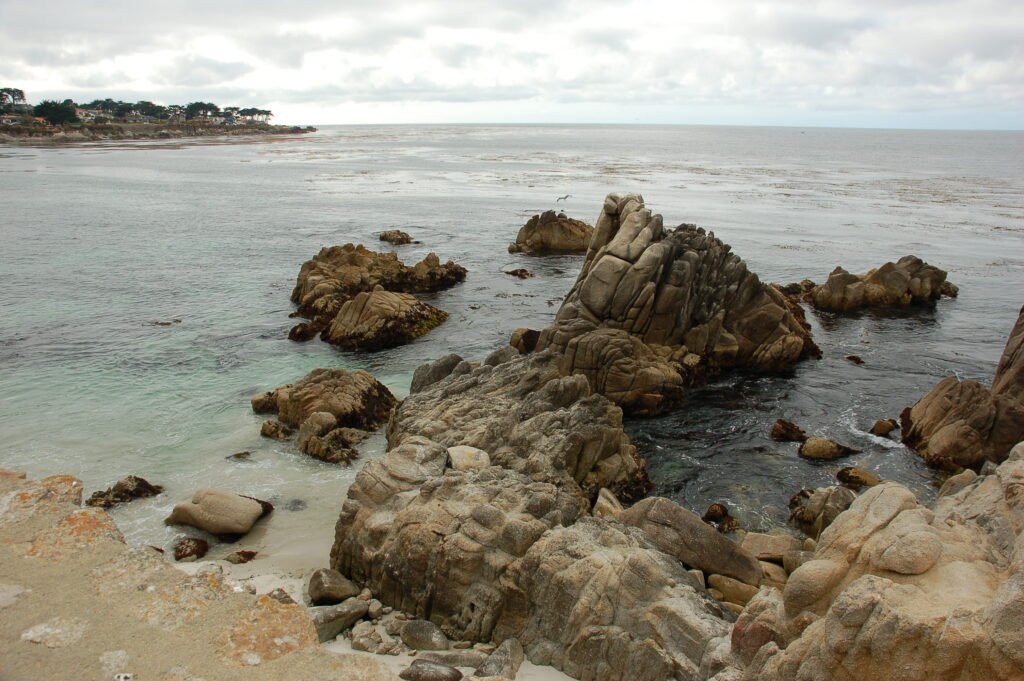
Factors Affecting Visibility
Visibility is a key factor in scuba diving, as it affects your ability to see and enjoy the underwater environment. In Monterey, typical visibility can range from a few feet to over 40 feet, and Carmel can reach 100 feet on some days. Plankton blooms, particularly in the spring and summer, can drastically reduce visibility. Storms, heavy rains, and strong swells can stir up sediment from the seabed, clouding the water. Bright, sunny days tend to improve underwater visibility compared to overcast days. During the winter, cooler water temperatures often result in clearer conditions, as plankton growth slows down. Visibility tends to improve after a few days of calm seas and no rain, allowing sediment to settle.

Dive When It’s Calm
Always check the current and forecasted swells before choosing a dive site. Large swells become large waves, making beach entry challenging and even unsafe. They also impact the underwater experience by stirring up sentiment and creating strong surge.
Fortunately, Monterey’s Southern dive sites, from Lover’s Cove to Del Monte Beach, are largely protected from the typical NW swell, and are often safe bets when swells are moderate. Point Lobos is also fairly well protected.
Carmel sites, including Monastery Beach, are more exposed and should be avoided when swells are more than a couple feet. Flat days are common, so prioritize these sites when swells are small.
Finally, be aware that swells are typically smaller in the morning, and grow when afternoon winds pick up. So if conditions are questionable when you enter, they are likely to be worse when you’re exiting the water.

Weather
Weather conditions such as temperature, cloud cover, rain, and wind also significantly influence diving in Monterey. Monterey’s water temperature ranges from 50°F to 60°F year-round, requiring divers to wear thick wetsuits or drysuits to stay warm. The air temperature can vary, affecting your comfort during gear setup and surface intervals. Overcast days can reduce visibility underwater and make surface conditions feel cooler. Heavy rains can reduce visibility by increasing runoff and sediment in the water. Additionally, rain can make surface conditions less pleasant. High winds can create rough surface conditions and contribute to swell formation, making dives more challenging and less enjoyable.

Tides
Tides are another crucial factor that divers must consider, as they affect both entry conditions and underwater currents. High tides often cover obstacles such as rocks and reefs, making shore entries easier. However, currents can be stronger during rising and falling tides, which can affect the ease of swimming and navigating underwater. Low tides may expose rocks and other hazards, making shore entries more difficult. Additionally, some dive sites may be too shallow to dive safely during low tide.
